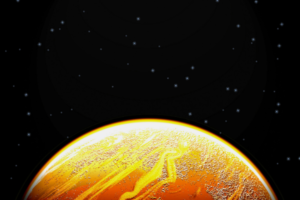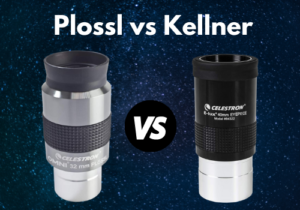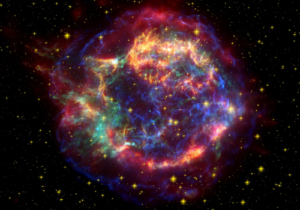How To See The Moon With A Telescope
Disclosure: This post contains affiliate links and I may earn a small commission (at no extra cost to you) if you click through and make a purchase. Thanks in advance – I really appreciate it!
Our moon is the easiest and the most impressive observing target. It always looks spectacular whether you’re using binoculars or a telescope. At low magnifications it will look approximately the same through any telescope. But a larger, more quality instrument will allow you to “zoom in”, and reveal countless craters, rills and mountains.
Key Takeaways:
You can see the moon even through a small telescope. A low magnification of 50X will let you see the whole moon, but if you want to see the moon’s craters, mountains, valleys and tilles, then use a magnification of 150X. A low power 25mm to 30mm eyepiece is sufficient to get in closer and see the moon in detail.
If you want to observe the moon with a telescope, you need to know just how and when to discover the best craters & mountains it has to offer.
And there is no shortage of them!
There are about 1,800 named features, including 1,500 craters, on the moon’s surface.
Some are easy to find, whilst others are a challenge even with a large telescope.
View The Moon Using A Telescope
Every amateur astronomer should start with the moon, not just because it’s easy to locate even with a starter telescope but also because it fills you with a sense of wonder.
You don’t have to be too worried about magnification, either. 50x magnification will let you see the whole moon, while you can use 150x to get in closer and reveal more details.
As a general rule of thumb, we recommend having a magnification of 50 power for each inch of aperture of your objective lens.
For example, if you are using a 4-inch refracting telescope, the maximum magnification you should use is 4 x 50 = 200 power.
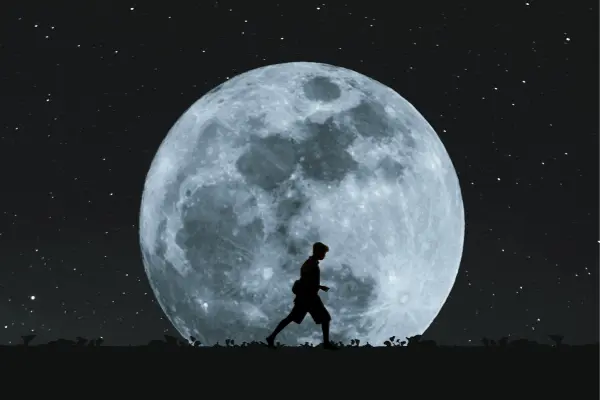
Use A Moon Map
A Moon map will help you easily study the moon’s topography, geology, and map out it’s many interesting surface features – such as craters, volcanoes, and surface rilles.
These maps are the result of decade’s worth of satellite and telescopic imaging, lunar landing missions, and even manned missions to the moon.
Many astronomy books include moon maps, or you can buy one on Amazon.
Most maps show the moon oriented more or less how you’ll see it with the unaided eye or binoculars- with its north side up.
But here’s the tricky part. Many telescopes give an upside-down view, and many give a mirror-image view. Some telescopes do both. These two effects are entirely separate from each other, and you need to deal with them separately.
If you have a reflector telescope, or a refractor that you’re viewing “straight through” , you’ll see an ordinary, non-mirror image: a correct image.
Related: Best Refractor Telescope For Beginners 2021; Reviews
If you’re using a telescope where the eyepiece fits into a right-angle attachment (a star diagonal), a mirror image is probably what you’ll see.
If you have a correct image, simply turn the moon map around until it’s mare patterns match the patterns you see.
If you have a mirror image, you’ll have to mentally flip the moon in your eyepiece right-for-left to match the moon on paper.
What is The Best Time to Look at The Moon?
Most people think it’s around the full moon, but in fact this is the worst time. At full moon, the sunlight is falling on the moon’s surface from straight overhead, it tends to be overly bright as well as flat and one-dimensional in appearance.
For better viewing of craters and mountains, try phases other than the full Moon. The shadows on the surface will be more pronounced, and help distinguish features you might otherwise miss.
The best time to look at the moon is the interval when the Moon is at or just past the First Quarter phase, or at or just before the Last Quarter phase, right along the sunrise-sunset line, or terminator. As terminator recedes, features near the border stand out in bold relief, the shadows become stronger and details are more easily seen.
In addition, a half Moon offers more viewing comfort to the eye as opposed to a full Moon.
But if you really want to look at the full moon comfortably, then perhaps consider purchasing a moon filter. Many telescope manufacturers offer such filters to help reduce glare on the moon’s surface so you can see more detail and features.

What is The Terminator Line on The Moon?
The terminator is the line separating the unlighted and lighted sides of the moon. When the phases are waxing it is the sunrise line on the moon, and when the phases are waning it is the sunset line.
Why Is Terminator Important For Viewing The Moon With A Telescope?
The best time to see an object on the lunar surface is when it is on or near the terminator.
While observing the Moon with your telescope, concentrate your observing along the terminator.
The sun is rising along this line, and so the shadows are at their maximum length. In fact, if you watch for a few minutes, you can actually see the shadows change as the sun rises.
Long shadows bring a real definition and contrast to features on the moon, making them much easier to locate and study in detail.
Related: Best Backyard Telescope 2021; Reviews
Is it Safe to Look at The Moon Through a Telescope?
It is completely safe to look at the moon through a telescope. The moon shines because its surface reflects light from the sun, and it reflects only between 3 and 12 percent of the sunlight that hits it. The intensity of these reflections is not powerful enough to harm your eyes.
However, the full moon, or even a quarter moon, is quite bright. You are basically looking at a rocky landscape at high noon.
Compared with the night conditions around you, the contrast in brightness is pretty dazzling. For this reason, astronomy suppliers sell “moon filters” that you can screw into your eyepiece to reduce the brightness by a factor of 8.
This makes viewing the moon more comfortable and pleasant but it is in no way necessary for safety.
What Are the Moon’s Phases?
If the moon is between the Earth and the Sun in its orbit, then the back side of the moon is being lit up and the side facing the Earth is in darkness. This is called a new moon. If the Moon is on the other side of the Earth compared to the Sun, then the near side of the moon will be fully lit up: a full moon.
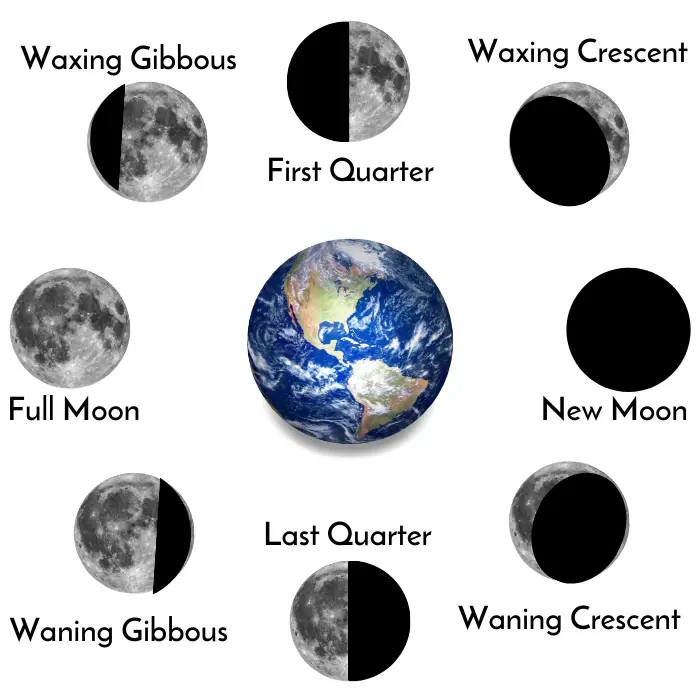
This graphic shows the phases of the Moon as we see them from Earth, and also how the Sun illuminates the moon.
In between these, the moon goes through multiple stages of partial illumination during its different phases. These are the banana-shaped crescent moon, the D-shaped quarter moon and the almost complete gibbous moon.
Finally, each phase is also named after its position in the full 29.5 day cycle based on whether it is growing (waxing) or shrinking (waning).
The eight phases of the moon in order are:
- New moon
- Waxing crescent moon
- First quarter moon
- Waxing gibbous moon
- Full moon
- Waning gibbous moon
- Last quarter moon
- Waning crescent moon.
The full, quarter and new moons are all the instants in time when the moon is exactly fully, half or not at all illuminated from our perspective on Earth. The crescent and gibbous moons each last approximately a week.
Written by:

Kavya Joshi
My love affair with space began in a field in India at the age of 7, when I looked up at the Milky Way for the first time. Ever since, I have been attempting to cram in every fact about the Universe, I can find into my head.
ABOUT US
We are a team of active amateur astronomers, here to help you with all your astronomy and science related needs – this is anything, from reviewing the latest telescopes to be released to talking about gravity and neurons. The Big Bang Optics was started because of our love for astronomy and to help others like us find the best telescope and accessories.
LEGAL DISCLAIMER
The Big Bang Optics is a participant in the Amazon Services LLC Associates Program, an affiliate advertising program designed to provide a means for sites to earn advertising fees by advertising and linking to Amazon.com. The Big Bang Optics also participates in affiliate programs with Clickbank and other sites. The Big Bang Optics is compensated for referring traffic and business to these companies.

